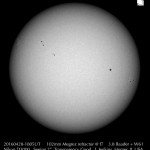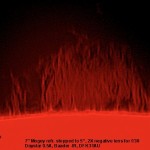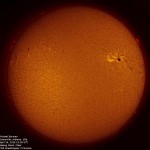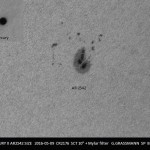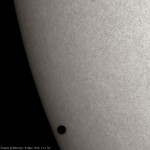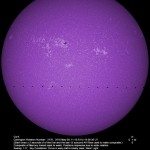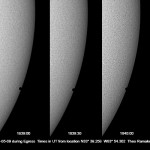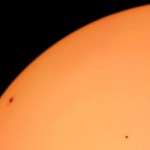May 20, 2016
Carrington Rotation 2176, a short summary
The Rotation ran from 2016-04-12 1857 UT till 2016-05-10 0053 UT.
Submitted images can be viewed at the following URL:
http://www.alpo-astronomy.org/gallery/main.php?g2_itemId=81501
15 Active Regions could be observed during the rotation (AR2529 – AR2543). The rotation started with a total active region area of 880 millionths and 22 sunspots and ended with a total active region area of 210 and 28 spots. The largest region in the previous rotation, AR2529, continued to be the dominant region for this rotation too, and maxed out with an area of 850 millionths. The lowest total area was recorded on April 23rd with 70 millionths. It has been a while since the Sun produced a flare larger than a M5, However early morning 4/18 marks the day/time when it produced an M6.7 flare which did cause an R2 alert to be posted. The highest Wolf Number (86) was recorded for 4/28 with 6 regions and AR2535 showing 9 spots by itself, and the lowest Wolf Number (11) on 4/24 when only region AR2433 was observed with only one sunspot.
The last day of the rotation showed a special event, the Mercury transit which was the subject of the previous summary. The archive received over 380 submissions for the rotation, with an additional 40 for the Mercury transit.
Thanks to all who spend their time observing the Sun, and submitting their observations.
The ALPO- Solar team.

